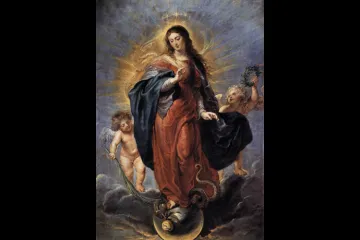CNA Newsroom, Dec 16, 2022 / 16:15 pm
The diocesan phase of the beatification processes of 140 priests and laymen murdered in Spain during the religious persecution of the 1930s was concluded today. Among the candidates is the priest who hid the body of St. Isidore so that it would not be desecrated.
There are three causes for beatification: one covering 61 diocesan priests from Madrid, another for 71 laypeople, and a third for eight members of the Catholic Association of Propagandists, all of whom were murdered during the religious genocide unleashed during the Second Spanish Republic and civil war.
These causes are promoted by the Archdiocese of Madrid, the Diocese of Getafe, the Catholic Association of Propagandists (ACdP), Catholic Action of Madrid, and Catholic Action of Getafe.
The religious persecution of those years “was the bloodiest suffered by the Church in our country, although not the greatest in history; yes, perhaps the most intense,” according to an auxiliary bishop of Madrid, Juan Antonio Martínez Camino.
Just in the last five months of 1936, when the war began, more than 7,500 priests were martyred. However, the prelate pointed out that “it’s not really about the ‘martyrs of the war’ as is sometimes said. They are more like martyrs of the revolutionary persecution” before and after the war.
Among the candidates for blessed whose diocesan phase closed today in Madrid, there are abundant examples of bloody persecution.
Many were tracked down and killed within hours. There were not a few who ended up in the Paracuellos de Jarama massacres. Others were humiliated. All approached death as a victory for God.
Humiliations
For the martyrdom of Father Federico Santamaría, the townspeople were gathered together to witness the spectacle. The priest was slapped and “beaten by children” before being shot, but “not before a militiawoman first cut off his ear as a trophy while he was still alive,” his cause recounts.
A group of laymen held prisoner in the mountain town of Los Molinos, north of Madrid, were tortured for four days. To add to the ridicule, they celebrated a sacrilegious Mass to humiliate them.
Protecting St. Isidore the Farmer and the Virgin of Paloma
Father Timoteo Rojo was canon archivist and librarian of the then Cathedral of St. Isidore beginning in 1929. He was prized prey for the militiamen, since it was believed that he could access important documentation of the diocese.
Together with three other priests, he was in charge of walling up the urn with the body of St. Isidore, who was canonized 400 years ago in 1622. Keeping the secret cost him his life.
After saving the painting of the Virgin of Paloma, an image with extraordinary popular devotion in Madrid, Father Andrés Rodríguez Perdiguero went to his parents’ house. Hugely popular, he was accused of “disaffection with the Fuencarral militias.” He was executed “with open arms in the shape of a cross” after forgiving his murderers.
Confessing the faith before dying
Father Manuel Escribano came out in plain view before the militiamen who entered his home: “If you’re looking for the priest, it’s me!” Once arrested, he said goodbye to his relatives, saying: “See you in heaven!”
(Story continues below)
Father José Bermúdez was reported by a neighbor woman. Upon being arrested, he exclaimed: “Know that I will never renounce my faith; you can do whatever you want with me.” Taken to a makeshift jail, he was beaten before being killed.
Attorney Fernando Urquijo, killed at the age of 34, wrote before he died:
“I am dying a martyr for these ideals, and I proclaim it as my greatest stamp of glory, of having been a Catholic, Apostolic, Roman until the last moment of my existence, in which, if God allows it, I shall die shouting: ‘Long live Christ the King!’ and ‘Long live Spain!’”
Propagandists
There are eight members of the Catholic Association of Propagandists (Advocates) who are part of this cause for beatification.
Among them are José María de la Torre Rodas, a lawyer who was general secretary of the Propagandists. He was also a member of the Marian Congregations, a lay association established to foster holiness through Mary. He is described as an “exemplary man who combined the joy of dealing with him with the most severe austerity of his person and of his particular life.”
The first rector of the Center for University Studies (CEU), Federico Salmón, is also part of this cause. State attorney, he led the law students of the National Confederation of Catholic Students.
In the political sphere, he was national councilor and general secretary of the Spanish Confederation of Autonomous Rights and Minister of Labour, Justice, and Health in 1935.
This story was first published by ACI Prensa, CNA’s Spanish-language news partner. It has been translated and adapted by CNA.






